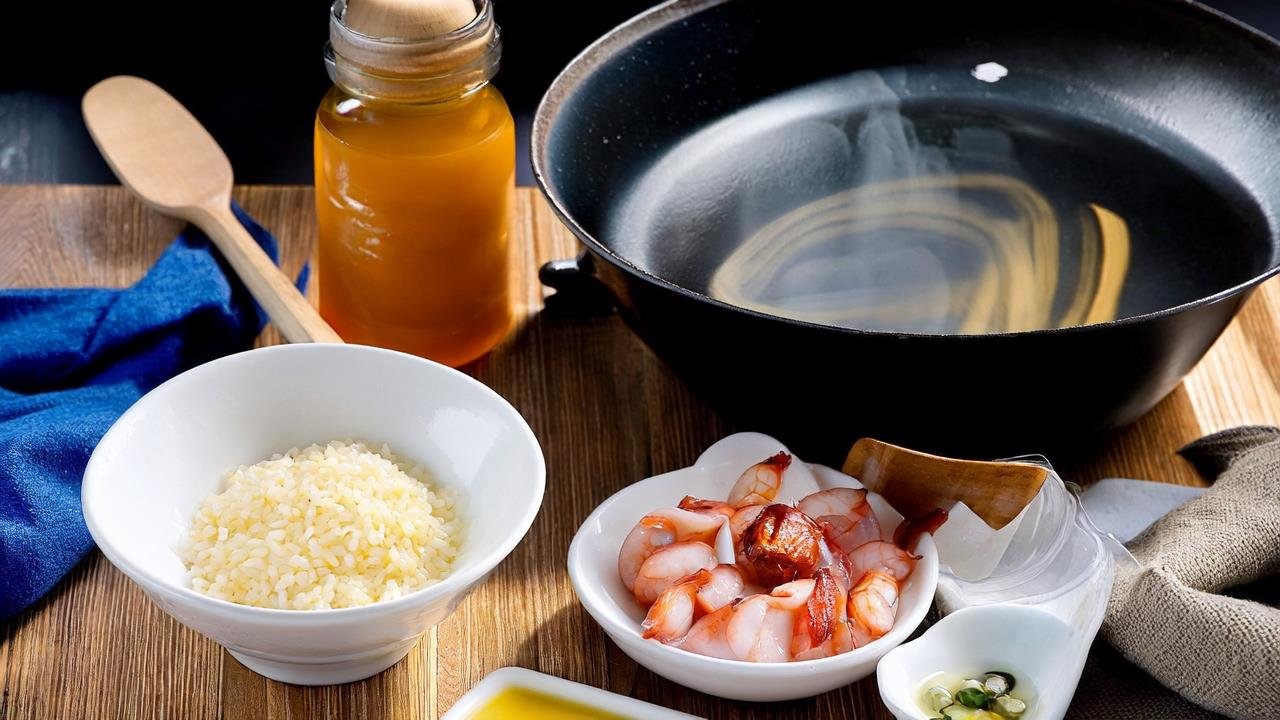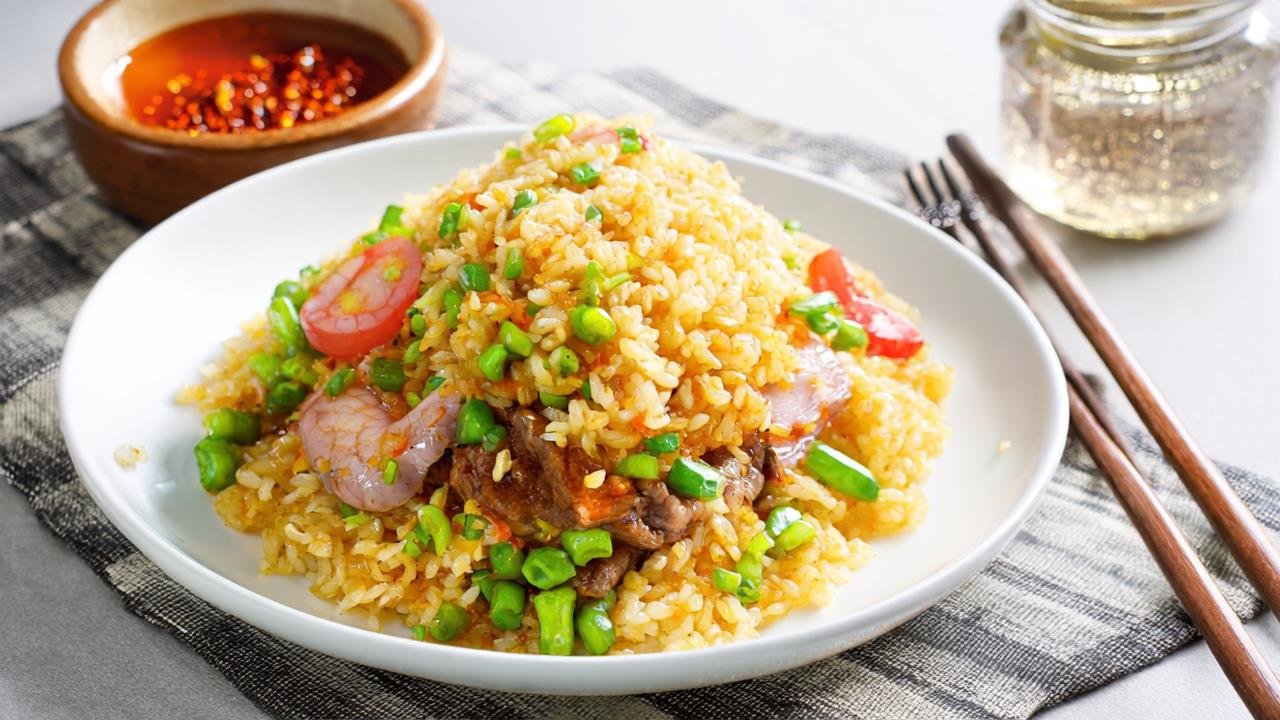Growing up in a Chinese-American household, Sunday brunch was never complete without a heaping plate of mixed meat and seafood fried rice—our family’s take on a Cantonese classic, zaap jai chow fan (什锦炒饭). My grandma would stand at the stove, wok in hand, as the scent of char siu (barbecued pork) and sizzling garlic filled the air. She’d toss cold rice with shrimp, peas, and a splash of dark soy sauce, turning leftover grains into a dish that felt like a hug. Today, I make it the same way—with a few tweaks for my American kitchen—and it’s still the meal that brings my family to the table.
The Story Behind the Rice
Zaap jai chow fan, which translates to “mixed ingredients fried rice,” hails from Cantonese cuisine, where “mixing” is a way of celebrating abundance. Historically, it was a smart way to use up leftovers—cold rice, leftover roast meat, a handful of frozen peas—but over time, it evolved into a beloved dish for festivals, family gatherings, and weeknight dinners. The beauty lies in its flexibility: you can use whatever you have on hand, and each bite offers a burst of flavor—salty char siu, sweet shrimp, earthy peas, and umami-rich rice. It’s comfort food with a cultural heartbeat.
How to Stock Up for American Kitchens
The best part about this recipe? You don’t need a specialty pantry to make it work. Here’s where to find ingredients in the U.S.:
- Asian Grocers: Stores like H-Mart, 99 Ranch Market, or online apps like Weee! carry char siu, light/dark soy sauce, and carbon steel woks.
- Mainstream Grocers: Look for frozen shrimp (peeled, deveined), frozen peas, and long-grain rice in the international aisle.
- Substitutions: No char siu? Use leftover rotisserie chicken or teriyaki beef. No wok? A heavy-bottomed skillet works (just crank the heat!).
Pro tip: Always use cold rice—hot rice gets mushy when fried. Cook extra at dinner the night before, or spread fresh rice on a baking sheet to cool fast.
Grandma’s Easy Recipe (For American Kitchens!)
Here’s the step-by-step—no fancy techniques, just lots of flavor:
Ingredients (Serves 4)
- 2 cups long-grain rice (cooked, cold)
- ? cup char siu (sliced into bite-sized pieces)
- ? cup frozen shrimp (thawed, patted dry)
- ? cup frozen peas
- 2 large eggs (beaten)
- 2 cloves garlic (minced)
- 1 tbsp vegetable oil (plus extra for frying)
- 1 tbsp light soy sauce (for umami)
- ? tsp dark soy sauce (for color—skip if you want lighter rice)
- Green onions (chopped, for garnish)
- Sriracha (optional, for a kick)
Let’s Cook!
- Prep the Fixings: Heat 1 tbsp oil in a wok (or skillet) over medium-high heat. Add garlic and cook for 30 seconds until fragrant. Toss in char siu and shrimp—cook until shrimp turn pink (2-3 minutes). Remove from the wok and set aside.
- Cook the Peas: Add a tiny bit more oil to the wok. Stir in peas and cook for 1 minute (they’ll brighten up!). Set aside with the meat/seafood.
- Fry the Rice: Turn heat to high (this is key for “wok hei”—that smoky, seared flavor!). Add 1 tbsp oil. Pour in beaten eggs and scramble quickly (1 minute—don’t overcook!). Push eggs to the side, add cold rice, and use a spatula to break up clumps. Stir-fry for 3-4 minutes until rice is golden and crisp.
- Season & Toss: Drizzle in light and dark soy sauce. Stir well so every grain is coated. Add the char siu, shrimp, and peas back to the wok. Toss for 1 minute—don’t overmix (you want fluffy rice, not mush!).
- Garnish & Serve: Top with green onions. Serve hot with sriracha on the side.

Why This Works for American Families
This recipe is forgiving—perfect for busy weeknights or lazy Sundays. You can swap shrimp for ham, peas for carrots, or char siu for tofu. The key is balancing salty (soy sauce), sweet (char siu), and umami (eggs, shrimp) in every bite. And if you’re short on time? Buy pre-chopped veggies from the grocery store—no one will know!

It’s More Than Fried Rice—It’s Home
For me, this dish is a bridge between my Chinese heritage and my American life. It’s the smell of my grandma’s kitchen, the sound of my dad laughing as he steals a bite, and the joy of teaching my friends how to use a wok. It proves that great Chinese food doesn’t have to be complicated—it just needs heart.
Next time you’re craving something cozy, something that tastes like “home” (even if home is a mix of two worlds), grab your skillet, toss together these ingredients, and let the magic happen. Trust me—your family will be asking for seconds.